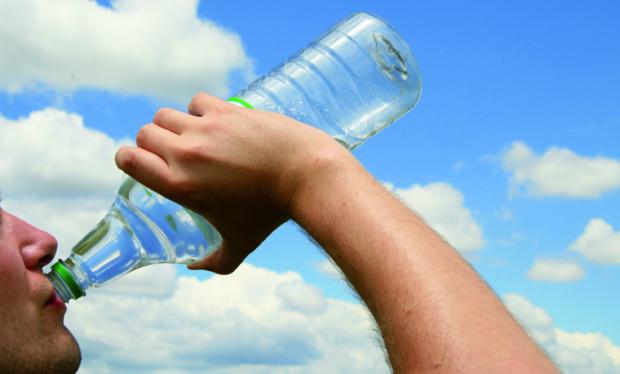
Tips for Coping with Summer’s Heat

Summer typically is the time when people head out and enjoy the great outdoors. But people with ALS have to take a few extra precautions during these hot months, warns Lora L. Clawson, certified registered nurse practitioner and director of ALS clinical services at the MDA/ALS Center at Johns Hopkins University in Baltimore.
- Watch for breathing problems.
Clawson notes that as respiratory muscles begins to weaken, heat and humidity make it even more difficult to breathe because the air is very humid and dense, sometimes causing a feeling of not being able to breathe. She recommends heeding local weather advisories that warn to remain indoors when the air quality is poor.
- Shun the sun. Clawson also urges staying inside during the hottest portion of the day when the sun’s heat and ultra violet rays are most intense — usually between the hours of 10 a.m. to 2 p.m., but in summer this may go even later in the day. If you must be outside in the heat, wear a large floppy, ventilated cotton hat, ventilated long-sleeved cotton shirt and pants, or shorts with a light towel covering the leg skin to protect against sunburn.
- Drink up. People with ALS should drink a liter to a liter-and-a-half of fluids on a daily basis, says Clawson, and even more when out in the heat. Water is preferred, but if thin liquids pose difficulty, substitute drinks without much caffeine, sugar and alcohol, which are dehydrating. Fruit nector juices, Jello, custards, puddings, or fruits like oranges and watermelon can provide extra fluids. Additives, such as Thick-It, thicken liquids so they can be more easily managed, without changing taste.
- Take small sips. Dumping in a liter of fluids in an hour is a sure way to fill the stomach and the bladder before cells have had time to absorb the fluid. The key is to take small sips of slightly cooled fluids throughout the day to allow the body to absorb the fluids without excreting them.
- What goes in must come out. Even with slow sipping, urination needs likely will increase with increased fluid intake. If toileting is difficult or time-consuming due to mobility challenges, drinking the recommended amount of liquid may sound like a nightmare. But it’s not healthy, especially for people with ALS, to decrease fluid intake in order to cut down on trips to the bathroom. To make toileting easier, try a male or female urinal, or check with your doctor about using an external or internal catheter. Another option is easy-to-remove adapted clothing such as Velcro-modified clothing, side zip pants, “backless” pants (available online at Silverts, silverts.com), or for women, cotton skirts and dresses worn without underwear.
- Watch for danger signs. Darker-colored urine means the body needs more fluids. Dehydration is characterized by increased thirst, dry mouth and a swollen tongue. Other signs include weakness, dizziness, mental confusion, inability to sweat, fainting, chest palpitations and decreased urine output.
The bottom line: stay cool, cover up, drink up, and enjoy the summer!